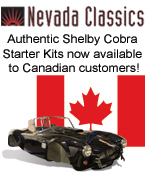This is an old post that was written at the time of Smokey's death. Since Mr. Bruce brought up his Camaro, I thought readers would be interested in this note sent to me by Wayne Scraba.
This was an email sent to me by Wayne Scraba, Technical Editor of NHRA. Wayne is a good friend and I thought if anyone would have some Smokey experiences to relate, it would be Wayne. In talking with Wayne, I always feel like I am in the Stone Age with my 60's knowledge of engine, cars, etc. His response below typifies his incredible wealth of technical expertise.
Hi Dan:
As far as Smokey was concerned, I had some conversations with him in the late Seventies and very early Eighties (nothing major just a couple of hours on the 'phone). We talked about revised firing orders on engines, and that included dialogue on the "double fire" concept. In this case, you revise the cam timing and the distributor (basically, the rotor has two tips and fires two cylinders at once). I was messing with it and Smokey had already done it (so had a few other hot rodders back in the Fifties but I didn't know that at the time). To make a long story short, there's no free lunch. Double fire doesn't really equate to double power or torque. But what came out of this for me was a better understanding of revised firing orders on V8 engines. There are a large number of possible firing order combinations. Some selected by Detroit are compromises (as expected) and a couple can actually improve horsepower. But I don't think I'll divulge which ones really work .
Smokey and I also discussed the concept of lightening the valve train, particularly on the side where no one paid attention: The lifter and pushrod side. I had thought about sleeving the lifter bores on a BBC, then using an investment cast titanium lifter. Smokey wasn't totally convinced it would work (although he encouraged me to try it), but today, there is considerable gain to be had in this part of the engine (as an example, Jesel manufactures a very, very light keyed roller lifter which is used in a large number of very high output engines). Smokey did get me on the right track as far as pushrods were concerned: Light, small diameter and stiff (i.e.: a tapered pushrod). He made me think about the actual weight of the
oil in the pushrod (typical BB Chevy). The larger the ID, the more
oil volume in the pushrod and as a result, the heavier the pushrod.
An interesting part of our discussions centered around cooling and retaining the heat in aluminum cylinder heads. I had found (and so had others) that if you used virtually identical heads on an engine, but one set was iron and the other aluminum, the iron heads always made more HP. Smokey had a process where the water jackets were coated in aluminum heads that allowed them to retain heat. This meant that he could use a head (aluminum) which was (a) easier to port, (b) easier to fix and (c) lighter but not sacrifice HP. The same can't be said of aluminum blocks, but that's another story. We also talked about piston coatings (way back then) and several other issues which I still can't discuss.
Smokey wasn't always right, even though some people figured he was infallible. One area was connecting rod length. His long rod theory has since been proven otherwise. But he was a remarkable innovator. For example, the double pumper Holley carb came out of his shop. So did a large amount of dry sump oiling system R&D. Many of today's dry sump systems owe much to Smokey Yunick. He led the way in other areas too: Teaching us (as racers) to think outside the box. Who would have thought about running an engine with no
oil pan (and a long pickup tube to a constant oil supply source to the pump) just so you could see where the oil went in an engine? Ditto with cutting heads and blocks apart and "plating" then with plexiglass windows so that you could watch the flow of water (engine obviously didn't run, but the water pump did so you watch the water pattern, and make changes to the system - that's pretty much how the Sprint car bunch figured out how to externally plumb the cooling on small block Chevys). Keep in mind he had a handle on "reverse cooling" the engine long before Detroit embraced it with the new generation (1992 and later) LT1 engines.
Most folks don't know he raced Fords, Chevys, Pontiacs, Hudsons and other combinations. He is obviously most famous for Chevrolets, but he did leave his mark on the other cars as well.
I'll miss him, his trademark Stetson and his cowboy boots - he was a fixture on the trade show circuit.
So I guess in the end, I don't have any stunning personal Smokey stories. I never went to his shop. I only talked to him on the 'phone. I was (and still am) a dumb racer looking for an advantage. Smokey simply helped by pointing me in the right direction on several issues. And I'm certainly not aloneŠplenty of others used his direct input to improve their programs.
Take care
Wayne
Report this post to a moderator | IP: 64.33.161.3
05-20-2001 05:06 PM


